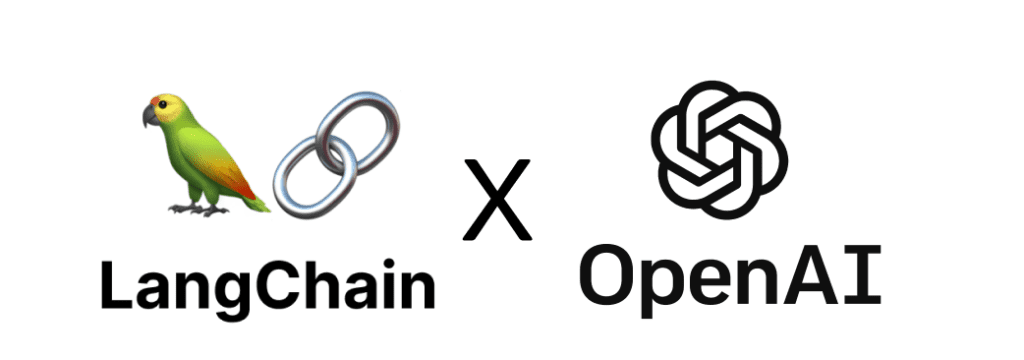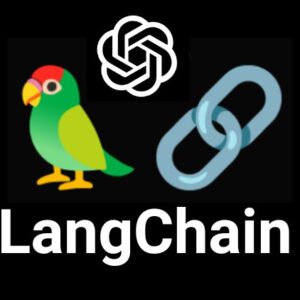Imagine having a super smart assistant that can understand and respond to you like a human. That’s basically what Artificial Intelligence (AI) is. It’s like teaching a computer to think and learn.
NLP: Teaching Computers to Understand Us
Now, let’s say you want to teach a computer to understand the words you say. That’s where Natural Language Processing (NLP) comes in. It’s like giving a computer a language lesson so it can understand what you mean when you talk or type.
LLMs: Super Smart Language Computers
Large Language Models (LLMs) are like super-smart students who have read every book ever written. They can understand and use language really well. Think of them as the brains behind many of the smart assistants you use today.
Langchain and OpenAI
Langchain and OpenAI are two big players in the AI world. OpenAI creates these super smart language computers (LLMs), and Langchain helps to put them to work in a useful way. It’s like OpenAI builds the brain, and Langchain helps the brain do cool stuff.
Understanding Langchain
Langchain is like a toolbox for building smart AI assistants. It’s a special tool that helps organize and connect different parts of an AI system. Imagine building a robot; Langchain is the blueprint that helps you put all the pieces together.
Core Components of Langchain
Langchain has a few key parts:
- Modules: Think of these as different tools in your toolbox. They can do things like finding information, summarizing text, or translating languages.
- Agents: These are like the little robots inside your big robot. They decide what to do next based on the task. For example, if you want to find a restaurant, the agent would use the right tools to search for restaurants and then suggest options.
- Memory: This is where your AI assistant remembers things. It’s like the assistant’s notebook. It helps the AI remember past conversations or information it has found.
How Langchain Works
Langchain brings all these parts together to create smart AI systems. It’s like a conductor of an orchestra, making sure everything works together smoothly. When you ask your AI assistant a question, Langchain figures out which tools to use, how to use them, and how to put the information together to give you a helpful answer.
Benefits of Using Langchain
Using Langchain is like having a shortcut to building amazing AI projects. It saves you time and effort because it provides ready-made tools and a way to connect them. Plus, it helps you create AI assistants that can do more complex tasks and learn from their experiences.
How OpenAI’s Language Models Work
OpenAI’s language models are like super-powered brains that have learned to understand and use language by reading lots and lots of text.
They can generate text, translate languages, write different kinds of creative content, and answer your questions in an informative way.
Integration of OpenAI Models with Langchain
Imagine Langchain as the body and OpenAI as the brain. Langchain helps to organize and control the super smart brain from OpenAI. Together, they create amazing AI assistants that can do all sorts of things.
Let’s dive into how these two work together to create powerful AI applications.

The Power of Langchain and OpenAI Together
Imagine having a super smart assistant that can not only understand you but also complete tasks for you. That’s the magic of combining Langchain and OpenAI.
How Langchain Enhances OpenAI’s Capabilities
Langchain takes the incredible power of OpenAI’s language models and gives them a body and a brain. It helps the language model understand the world around it, remember things, and complete tasks. It’s like adding super powers to an already intelligent assistant.
Real-world Applications of Langchain and OpenAI
Chatbots
- Creating engaging conversations: Langchain can help build chatbots that can have natural, back-and-forth conversations with users.
- Providing information: By combining with OpenAI’s knowledge, chatbots can offer helpful information and answer questions.
- Personalization: Langchain can help tailor chatbot responses to individual users, making interactions more personal.
Document Summarization
- Extracting key points: Langchain can use OpenAI to quickly summarize long documents into key points.
- Creating highlights: Imagine getting a summary of a news article or a research paper in seconds.
Question Answering
- Finding answers in documents: Langchain can help find specific information within documents using OpenAI’s understanding of language.
- Providing explanations: Beyond just giving answers, the combination can explain the reasoning behind the answer.
Sentiment Analysis
- Understanding opinions: Langchain can use OpenAI to determine the sentiment of a text, whether it’s positive, negative, or neutral.
- Gaining insights: Businesses can use this to understand customer feedback or social media trends.
Code Examples (Basic)
While we can’t provide full code examples here due to space constraints, we can give you a general idea:
Python
from langchain.llms import OpenAI
from langchain.prompts import PromptTemplate
llm = OpenAI(openai_api_key="YOUR_API_KEY")
prompt = PromptTemplate(input_variables=["text"], template="Summarize this text: {text}")
summary = llm(prompt.format(text="This is the text to summarize."))
print(summary)
This simple example shows how to use Langchain and OpenAI to summarize a text.
Getting Started with Langchain and OpenAI
Prerequisites: Python, API Keys
To embark on your Langchain and OpenAI journey, you’ll need:
- Python: Ensure you have Python installed. If not, download it from https://www.python.org/.
- OpenAI API Key: Sign up for an OpenAI account at https://beta.openai.com/account/api-keys and generate an API key.
Installation Process
Once you have Python set up, open your terminal or command prompt and install the required libraries:
Bash
pip install langchain openai
Use code with caution.
Basic Usage Examples
Let’s create a simple example to get you started:
Python
from langchain.llms import OpenAI
from langchain.prompts import PromptTemplate
# Replace 'YOUR_API_KEY' with your actual OpenAI API key
llm = OpenAI(openai_api_key="YOUR_API_KEY")
prompt = PromptTemplate(
input_variables=["text"],
template="Translate this into French: {text}"
)
french_translation = llm(prompt.format(text="Hello, how are you?"))
print(french_translation)
Use code with caution.
This code imports the necessary libraries, creates an OpenAI LLM instance, defines a prompt, and translates a simple phrase into French.
Troubleshooting Common Issues
You might encounter issues like:
- API Key Errors: Double-check your API key for accuracy and ensure it has the necessary permissions.
- Rate Limits: Be mindful of OpenAI’s rate limits to avoid API throttling.
- Library Version Conflicts: If you encounter issues, try creating a new virtual environment and installing the libraries again.
Conclusion
You’ve taken your first steps into the world of Langchain and OpenAI. The possibilities are vast, from building chatbots to creating complex AI applications.
Recap of Key Points
- Langchain is a framework for building applications with LLMs.
- OpenAI provides powerful language models.
- Together, they create intelligent systems.
- Start with basic examples and gradually explore advanced features.
Future Possibilities of Langchain and OpenAI
The future of AI is bright, and Langchain and OpenAI are at the forefront. Expect advancements in:
- More complex and nuanced language understanding
- Integration with other data sources and APIs
- Enhanced capabilities for problem-solving and decision-making
We encourage you to explore the depths of Langchain and OpenAI. The AI world is full of exciting opportunities!



0 responses to “Langchain and OpenAI: A Beginner’s Guide”